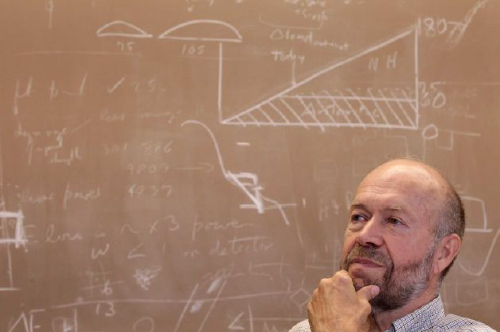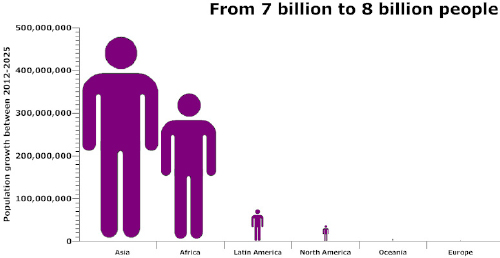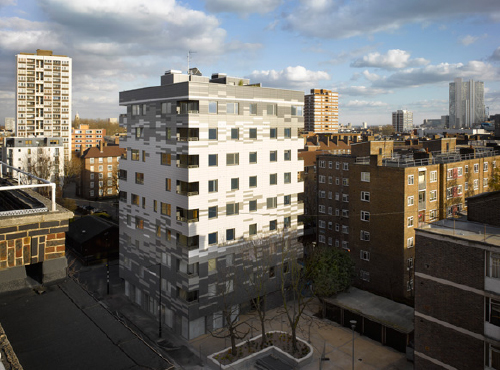Survival in the hands of generation 10 001


Generation 9999: Between 1933 and 1942, President Franklin Roosevelt provided work for three million young men in the Civilian Conservation Corps, planting more than two billion trees, and much more. Had that momentum been retained through the following generations, today’s wouldn’t now be left to single-handedly save all those subsequent. image Daily News
Sustainability could be the death of us. Bursting beyond the seven billion milestone, and with two billion poor and one billion poor and hungry, the global population is projected to swell to between 10 and 16 billion by the end of the century.
In 2011, human activity added a record 34 billion tonnes of carbon dioxide to the atmosphere and oceans, further fuelling extreme climate events and diminishing the capacity of agriculture to affordably feed a rapidly rising population—witness the Arab uprisings.
It is impossible to predict how soon, along this business-as-usual trajectory, existence for the majority will swing from difficult to diabolical. It could be as soon as 2025, by which time a population of eight billion people will be demanding to be fed.
Given that the capacity to feed the world has long exceeded mankind’s resolve to do so, the rational response is to deliberately and humanely depopulate sooner rather than accidentally and brutally later. A quick, back-of-a-condom-packet calculation indicates that a virtual moratorium on births could see the population return, by 2025, to five billion—about the level it was in 1988, when Dr James Hansen delivered his famous congressional testimony. Although this would still be double the likely long-term sustainable population, five billion would clearly fare better than eight, in the face of the widespread crop failures inevitable in a rampaging climate.
The anatomically modern human, Homo sapiens sapiens, is on about its 10 000th generation. If generation 10 001 was to largely forgo childbirth, humanity could probably ensure its own survival and limit the number added to the large proportion of today’s species that is already condemned by anthropogenic global warming. If one generation was to mostly forgo childbirth, it would be owed a monumental debt by civilization. That one billion cohort could be compensated, and not necessarily only in cash. If society was cynical, the saviour generation could simply be extended a line of credit—if it is good enough for the financier robber barons to extend credit to all and sundry simply to amass wealth for their unrepentant 1% selves…

Too Optimistic: Dr James Hansen said on Saturday that when he delivered his 1988 congressional testimony, he was too optimistic—‘My projections about increasing global temperature have been proved true, but I failed to fully explore how quickly that average rise would drive an increase in extreme weather.’ But Dr Hansen is probably also being too optimistic when he says there is ‘still time to act and avoid a worsening climate’—even if emissions ceased tomorrow, there is much warming in the pipeline to play out and it will be centuries before atmospheric carbon dioxide returns to pre-industrial levels. photographer Mary Altaffer Associated Press
To drag developed economies out of the Second Great Depression, Professor Steven Keen proposes a debt jubilee whereby every person receives $100 000, from which debt must be paid down. Simultaneously, the world’s financial institutions would be temporarily nationalised, and prevented from ever irresponsibly extending credit on a similar scale in the future. For rather longer than Professor Keen, Dr James Hansen has been proposing a very different form of market reform, one whereby a fee is paid for all fossil fuel extracted or imported, and is returned as an annual dividend directly back to the people. Dr Hansen strongly believes that this fee and dividend is the only form of carbon tax that Americans would tolerate, and that it would result in fossil fuel use giving way to non-carbon-dioxide-producing energy sources.
Both Hansen’s and Keen’s proposals place more faith than is reasonable in the free market’s aptitude for getting the world through its unprecedented environmental and financial crises. The 21st century latter-day Liberty ships desperately needed won’t be built unless governments make the requisite appropriations. Nor will one generation spontaneously forgo parenthood without a minutely detailed and closely coordinated richly rewarding programme. This could be in the form of a climate Civilian Conservation Corps whereby young people enlist to save the species through all manner of projects ranging from building dune land resilience to building high quality low-emission modular housing, both for their own accommodation and for that of the irretrievably poor and displaced.
The service, which might descriptively be called the Climate Corps, would train its own people—from foresters to health providers to smart-meter installers. Those not enlisted could support the climate effort by knitting the slippers worn during evening lectures, by baking Anzac biscuits—presumably, a less energy-dense interpretation of—or by donating their services as teachers, whether it be in the sciences, the humanities or in business management.

Our Next Billion: Many of the one billion babies due to arrive between now and 2025 will be born in regions least able to feed them. The chart is somewhat misleading in that the height of the cartoon figures, not their bulk, corresponds to the increase in population. chart Bits of Science
Enlistment could mean different things to members of the 10 001st generation, from fulltime employment and study, to contracting to go childfree. But those who choose to breed, or choose not to, but unsuccessfully, should also be entitled to enlist—the babies who were born would have lots of aunts and uncles, including non-biological ‘uncleses and auntses’, who would crave to help nuture children.
Much of the blame for the failure to mobilise on global warming falls on conservative politicians and voters who reward those politicians for protection of business as usual. But the green movement is also seriously culpable, by hijacking the issue to promote its longstanding sustainability agenda. Civilisation, arguably, has always been on an unsustainable trajectory. Had early thinkers on the subject, such as Henry David Thoreau, been sufficiently heeded, and civilisation had bred and industrialised sustainably, the build up of greenhouse gases would probably have been sufficiently gradual for runaway global warming to be safely headed off. That did not happen, and sustainability, until the short-term survival of species is secured, is academic. By preaching that all that is needed is sustainability, the green movement is dangerously misleading its followers.
In Aotearoa, the Green Party has elected to go to the other extreme. While it is still happy to claim the political climate change high ground when it suits its purposes, it now strenuously downplays the issue in its campaigning. The party’s current circular, Standing up for Everyday New Zealanders, totally fails to refer to the issue. The circular does briefly mention ‘green energy’, but green and carbon-free are not synonymous. Carbon dioxide is not a pollutant in the debilitating sense that sulphur dioxide, for example, is. Carbon dioxide is the ‘oxygen’ of the plant world, and key to keeping the nighttime temperatures from going through the floor. In the context of global warming, it’s a case of too much of a good thing—395.77 parts per million in June, an increase of more than 41% above the pre-industrial era level of the gas that glaciologist Professor Richard Alley describes as the the climate control knob.
![Go to the Guardian: Arctic Sea Ice [Volume Sub-] 2007 Record Arctic-Sea-Ice-Volume-20120731](https://www.mahurangi.org.nz/wp/wp-content/uploads/2012/08/Arctic-Sea-Ice-Volume-20120731-500.jpg)
Everyday Events: Just as the Green Party decides to dumb down its message to ‘everyday New Zealanders’, a summer of drought and wildfire results in 70% of Americans joining the global warming dots. Not only has 97% of Greenland experienced surface melting, summer Arctic sea ice, at the end of July, is at a record low volume. chart University of Washington Polar Science Center
In contrast, the Australian Greens lists climate change in the first level of policy on its website:
Climate change poses the greatest threat to our world in human history and requires urgent local, national and global action.
The State of Victoria lower house by-election result on 21 July, where Green candidate Dr Cathy Oke only narrowly lost to Labor’s Jennifer Kanis, illustrates the much stronger support the Australian Greens enjoy than its Aotearoa counterpart, despite the party’s unapologetic position on global warming. Polls released on Sunday night have the Green Party down to 12%One News Colmar Brunton and 11.2%TV3 Reid Research. Welching on global warming, aside from being intellectually dishonest, is politically shortsighted given that popular appreciation of the issue would inevitably rise rapidly once the impacts, such as a summer ice-free Arctic, manifested. In the event, it is the 2012 summer of drought and wildfire destruction that has led the upsurge to 70% acceptance in the United States of the reality of global warming.
Lurking beside the Australian Greens’ admirably courageous global warming policy, and entirely negating it, is its fiercely dogmatic nuclear-free policy. The vehemence of its anti-nuclear position is such that it and the bulk of Australia’s conservation movement had nothing to do with Dr James Hansen’s 2010 Tour. Tellingly, it was species extinction authority, environmental scientist Professor Barry Brook who, with Hansen’s publisher, organised the Australian talks. Both Brook and Hansen are strong supporters of fourth-generation nuclear power. But rather than set dogma aside long enough to listen to the reasons this technology is indispensable, not only to replace coal burning power stations that are being built at the rate of one per week in China, burning largely Australian, Indonesian, and Russian coal, but also to safely and productively burn the world’s warhead plutonium and nuclear waste, the Greens want a nuclear-free Australia, whilst wishing away China’s 14 operating reactors and its 26 under construction. These reactors are essential if there is to be any prospect of runaway global warming being averted—all the photovoltaic panels in China, or at least a year’s panel production, if China could afford to install it there, would supply about 1.3% of its electricity needs.

Courageous Cousins: While New Zealanders cling to their smug anti-nuclear-everything dogma, Australians are engaging in a civilized (at least in the forum this flyer advertised) conversation about the urgent and indispensable role for fourth-generation nuclear power in limiting the ruinous burning of coal. flier Town of Walkerville
Until a 1796 lecture by Georges Cuvier established extinction as a fact, humans where unaware species could be lost, much less be lost as a result of human carelessness. Exploring in the Astrolabe, Dumont d’Urville named Cuvier Island for the influential scientist—all too influential, in respect to his opposition to the notion of evolution, which was only broached when Charles Darwin published The Origin of Species.
Biologist E O Wilson writes in The Future of Life, 2002, that half of all extant species will be extinct in 100 years. Such is the reputation of this world authority on ants—least said the better about his group selection theories—that this has become an oft-quoted metric. But the percentage of the Earth’s species that can avoid extinction this century is unknowable, given that the amount of warming is unknowable, both because there is no indication as to how long the business-as-usual trajectory will be maintained, and because there is no close analogue in the paleoclimate record to compare with the speed at which greenhouse gas concentrations are increasing.
What is known is that within the last 500 years at least 80 mammal species, of a previous total of 5570, have gone extinct. If the average expected rate is less than two extinctions per one million years, mammalian extinctions are already running at more than 80 000 times the background rate—not only is the Sixth Mass Extinction well underway, it is accelerating as global warming bites. Sustainability, to paraphrase Mahātmā Gandhi’s quip about Western civilisation, would be a good idea. But at approaching three times the world’s sustainable population, the notion of humanity living sustainably is oxymoronic, with or without a photovoltaic or similar miracle. Survival demands that all available resources are deployed to apply the brakes to population growth. This would almost immediately remove the need to build more fossil-fuelled power stations, and soon thereafter the need to build new roads and new houses. In the interim, any new urban development should be on land that will be dry following the loss of the ice sheets—building at sea level, or rebuilding as in the case of Christchurch, will, within half a century, be exposed as stupendously shortsighted.
With the brakes put on growth, the business world need not abandon all hope. Not only must the energy infrastructure be de-carbonised, a massive energy efficiency retrofit is called for. A prime flagship project would be to electrify Auckland’s Northern Busway, making it the Northern Trolleybusway, followed promptly by a Northwest Trolleybusway. The power needed and more would be that which is currently squandered heating water during the rush hour—freed up in short order by two million smart meters fitted by squads of bright young women from the Climate Corps.

Ticking All the Boxes: Putting the brakes on global population growth doesn’t mean stagnation. Aotearoa has a strong duty to house its share of the masses forced from their own regions, particularly the Pacific, by global warming. University of Canterbury engineers are at the forefront of earthquake-proof post-tensioned wooden building design, which an intelligent government would be showcasing exclusively in the Christchurch rebuild. image Waugh Thistleton Achitects
Mobilisation would provide opportunity aplenty for the businesses that get involved. The alternative is to let the Second Great Depression drag on and on, which the few who understand its causes believe it will do for decades. The great free market experiment has failed even by its own selfish standards. But that it has also placed civilisation and much of nature in danger of destruction means that it must never again be allowed to subjugate the democratic will of the people. That, however, will require a much more thorough job of building a robust democratic world order than was achieved in the ashes of World War II.
Sustainability, as currently defined, is worse than unachievable—it is contributing to the severity of the Sixth Mass Extinction. Because of serial failures of nominal generations 9999 through 10 000, it is now the epic responsibility of generation 10 001 to save humanity and the natural world—‘and’, because without a species-saving mobilisation, the Sixth Mass Extinction will prove even greater.
Generation 10 001 is responsible for the survival of all others that might follow.
